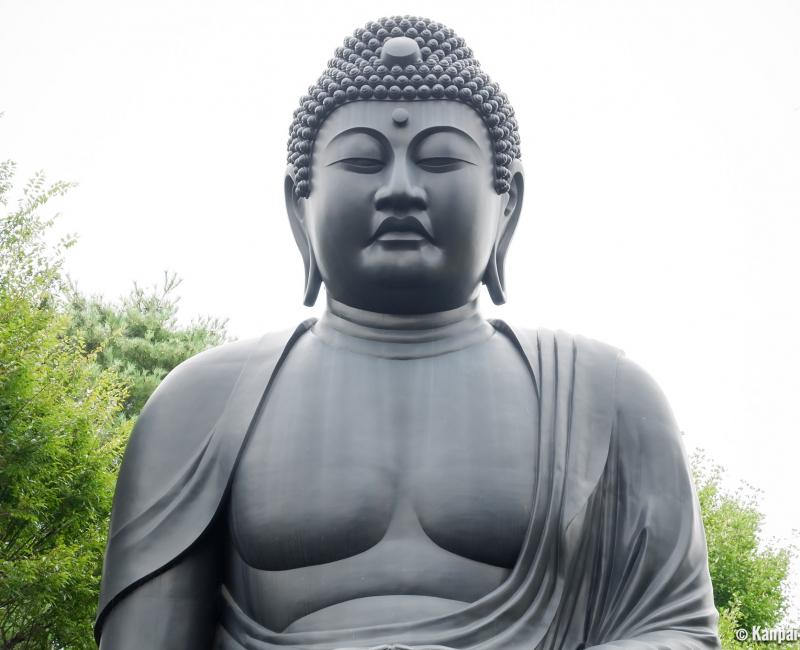Joren-ji
Tokyo’s Great Buddha
Joren-ji is a Buddhist temple located in Itabashi ward, in the north-western suburb of the Japanese capital. It stands out thanks to its famous Daibutsu (Great Buddha) of Tokyo sitting in the middle of a beautiful garden, where seasonal flowers abundantly bloom among many statues of spiritual significance.
Finding Joren-ji temple is already a small journey in Tokyo by itself. One must indeed go far from the center of the city, outside the range of the Yamanote Line to discover less touristic residential neighborhoods that are also more authentic. It makes for a Zen and refreshing visit, far from the bustling of the most famous spots in Tokyo.

A past shaped by the Tokugawa clan
The Temple's history began at the end of the 14th century, during Muromachi era (1336–1573) under the reign of emperor Go-Komatsu (1392-1412). It was then located in Yamanaka Mura, near the former Nakasendo road that connected Kyoto to Tokyo. In 1591, daimyo feudal lord Tokugawa Ieyasu (who later became shogun of Japan), granted the temple the Shuinchi. It was an official signature, materialized by a red seal giving Joren-ji all the administrative rights on its own territory, that is to say: the exemption of annual taxes and feudal chores. Therefore, the temple thrived, and its importance grew, allowing it to move closer to the capital, in Nakajuku area, in the early Edo period (1603-1868).
Later, eighth shogun Tokugawa Yoshimune (1716-1745) was fond of the place and used it frequently to rest during his falconry hunting parties. Many places in Joren-ji are thus marked with the Tokugawa clan’s mon, a family crest named Maruni-mitsubaaoi and picturing a triple hollyhock in a circle. Lastly, in 1973, the temple was moved to its current address, due to the enlarging of the national road n°17 and the construction of a highway on its former territory.

A majestic bronze Daibutsu
Joren-ji’s main attraction is certainly its great Buddha Amida bronze statue, whose black patina is quite unusual. The statue represents Buddha sitting on a pedestal shaped as the sacred lotus flower, it is 13 meters high and weighs 32 tons according to estimations. It was erected in 1977 to protect the region against disasters, with the Great Kanto Earthquake OF 1923, and the areal bombings of Tokyo in 1945 in mind.
Its head is slighted bending toward the grounds, which gives the impression it is looking at visitors, who are given a great opportunity for soul-searching and Zen meditation.
The visit of the garden is enlivened by several edifices, such as/
- The large jokoro pot for incense burning,
- A small shrine to recall the Great Tempo famine (1833-1836), and,
- The tomb of a famous Japanese explorer Naomi Uemura (1941-1984).
Moreover, many stone statues are hidden in the bushes. The most easily identifiable are the cute Jizo, the protector of children and travelers, and the Shichi Fukujin, the Seven Lucky Gods of Japan. In addition, on the right of the main hall Hondo, there is a beautiful pond inhabited by koi carps.
Joren-ji is a quiet place all year long, except for the spring 🌸 cherry blossoms season in early April, and the reddening of foliage in autumn 🍁. It is thus a pleasant spot for photograph amateurs. The only drawback is that the interior is closed to the public, and therefore impossible to visit.

